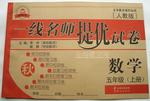题目内容
【题目】In 1996 John Jones made an unusual discovery. He had just enlarged (扩大) a piece of paper money for a friend—a Confederate bank note, money issued (发行) by banks in Southern States of America during the Civil War. When he was face to face with the picture, he couldn’t believe his eyes: slaves (奴隶) happily picking cotton in their master’s fields.
Jones grew up in South Carolina. He had heard painful stories of slavery from his greatgrandmother. The picture on the money did not match (匹配) the history of African American slaves that he’d heard all his life. “I had never seen that type of picture on money before,” he said.
Jones wondered why slaves looked so happy. He started doing research.
Searching for and finding the answers to his questions changed his life. During two years’ search, Jones found more than 120 different bills. He discovered that the bills had several things in common. They showed slaves working in jobs related to farming. Many of them showed healthy and smiling slaves at work. None of the bills showed the hardships of slavery.
Jones wanted to share what he had learned. “I wanted other people to see what I had seen,” he said. He decided to make large paintings of the pictures on the money. After three years of work, Jones had painted more than 80 slavery scenes (场景).He paired each painting with the money on which the picture appeared. “The Color of Money”—an exhibit (展览) of his work—has toured the country.
Jones' paintings tell an important story about the South 150 years ago. He likes to repeat the saying. “The story is on the money.” In this case, the saying happens to be true.
【1】How did Jones feel when he saw the picture on the money?
A. Angry. B. Painful.
C. Excited. D. Surprised.
【2】Why did Jones do research on the money?
A. He had never heard of Confederate money.
B. He wanted to learn about American history through it.
C. It showed slaves quite different from those in his mind.
D. His great-grandmother told him some unusual stories about it.
【3】What did Jones find?
A. About 120 different bills were issued during the Civil War.
B. The difficulty of slaves was never shown on the bills.
C. Slaves lived a harder life than he thought.
D. Slaves worked long hours on farms.
【4】What’s the best title for the text?
A. Confederate Money. B. Money Tells a Story.
C. African American Slaves. D. John Jones Changes America.
【答案】
【1】D
【2】C
【3】B
【4】B
【解析】本文是记叙文,主要介绍了一名美国艺术家展出80余幅绘画作品让人们了解美国南部奴隶的真实生活状况。
【1】D
推理判断题。根据第一段中的When he was face to face with the picture, he couldn’t believe his eyes和第二段中的I had never seen that type of picture on money before可知,当Jones看到南部联盟纸币上的图片时,觉得很不可思议。故选D。
【2】C
推理判断题。根据前三段内容可知,南部联盟纸币上的图片显示奴隶快乐地在田间采摘棉花,这与Jones听到的有关奴隶的痛苦生活不相符,因此他决定一探究竟。故选C。
【3】B
细节理解题。根据第四段中的Many of them showed healthy and smiling slaves at work. None of the bills showed the hardships of slavery.可知,Jones最后发现南部联盟纸币上的图片都将奴隶刻画成欢快劳作的样子,而从未描述他们生活的艰辛。故选B。
【4】B
标题归纳题。Jones发现一张纸币上的图片展示的奴隶生活和他听说的有很大出入开始研究,经过深入调查发现纸币上的图片都不能反映当时奴隶的真实状况。他花费三年的时间画了80余幅作品告知人们关于奴隶的真实故事。最后一段中的The story is on the money点出文章的主旨。故B项做标题贴切。

 一线名师提优试卷系列答案
一线名师提优试卷系列答案【题目】Protection Publications
CUSTOMER HEALTH: A GUIDE TO INTELLIGENT DECISIONS Eight softcover edition of leading college text covering all aspects of basic health strategy(策略) for consumers. Includes much information on food fashion and “alternative methods”. Thoroughly referenced. By Stephen Barrett, M. D. , William M. London, Ed. D., Robert S. Baratz, M. D. , D. D. S. , Ph. D. , and Manfred Kroger, Ph. D. 608 pages, $23.00 |
CHIROPRACTIC(手疗法): THE CREATEST HOAX(骗局)OF THE CENTURY? L. A. Chotkowski, M. D. , FACP, describes discoveries made during his half-century of medical practice. Includes reports of cases; the author’s observations at New York Chiropractic College, a chiropractic office, and a chiropractic lecture; and details of critical reports in the media. Second edition, softcover, 208 pages, $15. |
THE WHOLE TOOTH The fundamental guide to protecting your dental health and your pocketbook. Covers preventive care, finding a good dentist, dental restoring, cosmetic dentistry, dental quackery (治疗) and fraud(假牙), and dental insurance programs, including managed care. By Marvin J. Schissel, D. D. S. , and John E. Dodes, D. D. S. Softcover, 284 pages, $10. |
QUACKERY AND YOU The 32-page softcover brochure with special viewpoints by William Jarvis, Ph. D. , suitable for waiting rooms. $1. |
To above prices, please add 1 for each additional book for postage & handling. Foreign countries add $5 per book. Send orders to Quackwatch, P. O. Box 1747, Allen Avenue, NY 18105. The checks must be in US dollars. We cannot process credit card orders. Please use our order form from amazon.com and include your email address.
【1】What do the four books have in common?
A. The contents. B. The means of cover packing.
C. The prices. D. The dates of publication.
【2】What can you do to search for more information about the books?
A. Buy the brochure. B. Write to the author.
C. Telephone the sellers. D. Visit amazon.com.
【3】How should a Canadian pay if he wants to buy all the four books?
A. Pay $69 in all. B. Pay $65 in total.
C. Pay for them by credit card. D. Pay for them in Canadian dollars.
【4】For whom is QUACKERY AND YOU designed?
A. Those who order some medicine.
B. Those who hole special opinions.
C. Those waiting to see the doctor.
D. Those studying the science of medicine.